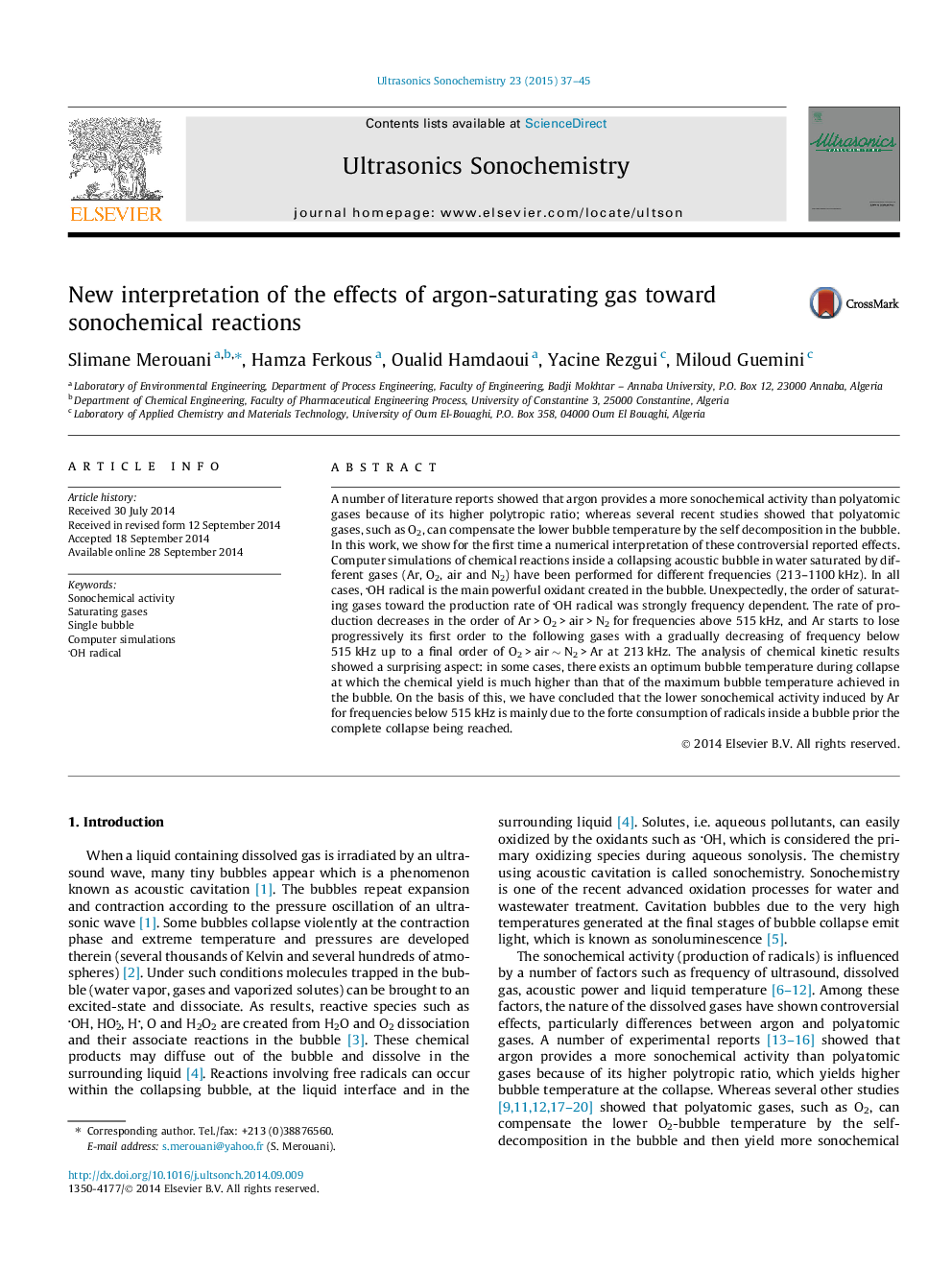| Article ID | Journal | Published Year | Pages | File Type |
|---|---|---|---|---|
| 7703893 | Ultrasonics Sonochemistry | 2015 | 9 Pages |
Abstract
A number of literature reports showed that argon provides a more sonochemical activity than polyatomic gases because of its higher polytropic ratio; whereas several recent studies showed that polyatomic gases, such as O2, can compensate the lower bubble temperature by the self decomposition in the bubble. In this work, we show for the first time a numerical interpretation of these controversial reported effects. Computer simulations of chemical reactions inside a collapsing acoustic bubble in water saturated by different gases (Ar, O2, air and N2) have been performed for different frequencies (213-1100 kHz). In all cases, OH radical is the main powerful oxidant created in the bubble. Unexpectedly, the order of saturating gases toward the production rate of OH radical was strongly frequency dependent. The rate of production decreases in the order of Ar > O2 > air > N2 for frequencies above 515 kHz, and Ar starts to lose progressively its first order to the following gases with a gradually decreasing of frequency below 515 kHz up to a final order of O2 > air â¼Â N2 > Ar at 213 kHz. The analysis of chemical kinetic results showed a surprising aspect: in some cases, there exists an optimum bubble temperature during collapse at which the chemical yield is much higher than that of the maximum bubble temperature achieved in the bubble. On the basis of this, we have concluded that the lower sonochemical activity induced by Ar for frequencies below 515 kHz is mainly due to the forte consumption of radicals inside a bubble prior the complete collapse being reached.
Related Topics
Physical Sciences and Engineering
Chemistry
Chemistry (General)
Authors
Slimane Merouani, Hamza Ferkous, Oualid Hamdaoui, Yacine Rezgui, Miloud Guemini,
